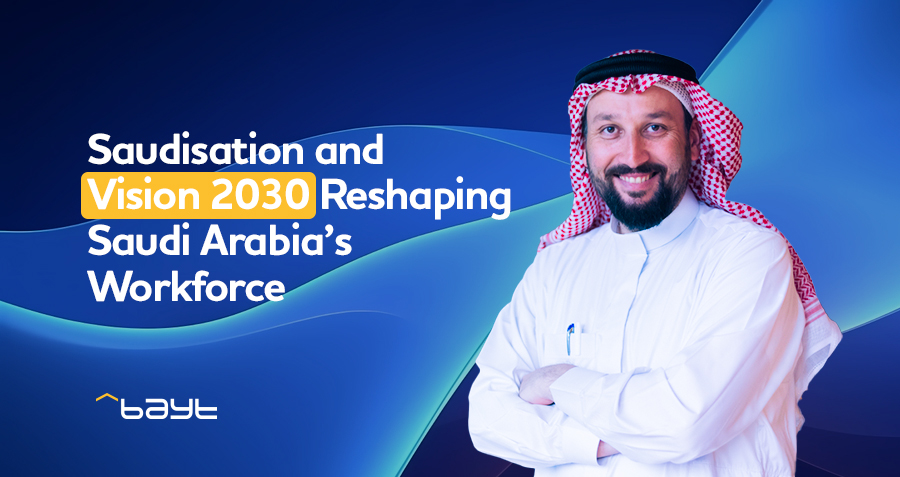![]()
Ready To Start Hiring?
Successful hiring starts with a simple step
Over the past year, Saudi Arabia has gone through a series of transformative changes, ranging from significant employment reforms to opening up exciting opportunities in the tourism sector. These will be reflected in the strategic efforts that will empower its citizens in the workforce and at the same time attract contributions from global investors that will boost the growth of the nation. So how does Vision 2030 align with the Saudisation initiative?
Here are some important things to understand when talking about Saudisation and Vision 2030:
Over the last couple of decades, the Saudisation initiative in Saudi Arabia, particularly under the Nitaqat framework, has been essential in reshaping the labour force of the nation. The Nitaqat framework refers to a system of classification and evaluation used by companies in Saudi Arabia for their hiring operations. Several adjustments have been made during this period to boost the employment of Saudi citizens as part of the future of work in MENA.
A crucial question is raised by all of these revolutionary developments, though: How does Saudisation affect businesses’ capacity to interact with immigrants? And where does that leave us today? It is vital to examine this relationship as it makes us aware of Saudi Arabia’s continuous progress towards Vision 2030.
The Nitaqat framework uses a color-coded method to differentiate across Saudi companies. It goes from red (non-compliant) to platinum (highest).
Furthermore, recruitment in MENA is different from the rest of the world. So, Saudisation calculations now consider salaries paid to Saudi nationals, with slight uplifts to minimum salary payments. Instant calculation for Saudi employees reflects a more streamlined process, counting from day one rather than the previous 26 weeks.
A significant breakthrough is the 2019 introduction of the Tourism Visa, offering free visas on arrival for 49 nationalities.

In 2021, significant changes in Saudi Arabia’s immigration landscape further shaped the Vision 2030 initiative.
The Professional Verification project, which was introduced in July 2021, was a revolutionary step. This effort evaluated the talents of foreign nationals in 1,000 specialized occupations across 23 areas with the goal of attracting highly skilled expatriates while guaranteeing locals would have plenty of chances.
In addition, Saudi Arabia removed the Short Term Work Visit Visa in 2019 and replaced it with the Temporary Work Visit Visa (TWVV). The TWVV closed the gaps found in the previous system, protecting the Nitaqat framework. It was expected that multinational corporations and foreign talent looking for short-term work assignments in Saudi Arabia would find this new visa especially attractive.
These modifications highlight Saudi Arabia’s flexible immigration policy, which aligns with Vision 2030’s objectives.
Saudi Arabia’s Vision 2030 points the country toward a thriving future. Saudi Arabia wants to grow in the tourist, manufacturing, and educational sectors. This endeavor is embodied in the NEOM project, a zero-carbon city that has drawn international investment and generated about 380,000 employees.
The Kingdom’s immigration setting is changing dramatically in line with economic shifts. The Labour Reform Initiative reduces obstacles for immigrants by eliminating the requirement for permission from their employers to leave and join the nation. Hence, the process of moving jobs between private sector businesses is now more efficient. But first, a few prerequisites must be satisfied.
As a result, this indicates a delicate balance in how Saudi Arabia’s hiring regulations are evolving. While offering jobs to their citizens is the main objective, they also want to bring in investments from other regions. Therefore, these developments would take strategic planning from the government, businesses, and practitioners. It will likely exhibit a delicate balance between international collaboration and Saudi nationals.
It is critical to strike the correct balance between assisting the local population and embracing foreign business. As Saudi Arabia modifies its labour laws, the newer changes will require businesses and professionals to have a strategy for the way forward.
![]()
Successful hiring starts with a simple step